Looking for the best network scanning tools is difficult, especially if you’re using them for the first time. Therefore, we curated a list of the best and most advanced network scanners in 2024. Below is the quick list of these tools.
- WireShark: Free network protocol analyzer capable of analyzing wired and wireless network data.
- Nmap: It is a free and open-source network scanner popular among security professionals.
- NetScanTools Pro: A simple network scanner that identifies devices connected to your network.
- ntop Scanning Tools: A free open-source network monitoring tool used to visualize traffic on a network.
- Angry IP Scanner: It is a fast and lightweight network scanner that scans local and remote networks.
- Fing: A cross-platform network scanner scans your network for devices, services, and vulnerabilities.
- ManageEngine: The tool provides detailed information about devices connected to your network.
- Acunetix: It is a commercial network scanning tool designed to detect vulnerabilities in web applications.
- Advanced IP Scanner: It can scan large networks quickly and efficiently.
- OpenVAS: A free to use and can be integrated with (OVAL) to write new security tests.
- Qualys FreeScan: It is an open-source scanning tool that offers three types of scans for multiple vulnerabilities.
- Nikto: The network scanner provides rapid testing to identify any suspicious activity in the network.
- Retina Network Security: It is free to use and provides security patches for up to 256 IPs.
- Nessus: It has built-in plugins which allow it to detect over 50,000 vulnerabilities.
- Snort: This free to use and analyzes the IP address, along with the traffic passing through the network.
- Nexpose: It is a commercial tool that scans networks, operating systems, and application databases.
- OpenSSH: It creates a secure connection over an unsafe network link by encrypting it.
- Paessler PRTG: This allows you to know about your device bandwidth and apps using the source of bottlenecks.
- Skyboxsecurity: It is a commercial network security scanning tool designed to detect vulnerabilities in your network.
- Site24x7: A free tool for monitoring the overall health of devices on the network.
- Solar Winds Network Topology Mapper: It is a tool for visualizing your network and connected devices.
Within a network, a compromised or vulnerable device can disrupt your network security in the long run. Similarly, faulty or vulnerable applications lacking appropriate endpoint security can harm your digital security and data privacy. Therefore, using some of the best network scanning tools is crucial. These tools allow you to scan your network for devices and detect possible vulnerabilities a threat actor might exploit.
Since many network security vulnerabilities lurk over the cyber threat landscape, no “one tool fits all” is available for network security. Therefore depending upon the need and use, you must identify the best network security tools that fit your need. While network scanning is somewhat of a complex task, such tools can make it much more manageable.
How to choose the best Network Scanning tool
When choosing a network scanning tool for vulnerabilities, it is essential to consider your needs and requirements. Each tool has its features, so you must ensure the tool you choose has the features you need. Here are some factors to consider when selecting a network scanner:
- Purpose: Since every network scanning tool has different features serving a different purpose, choosing a tool that best fits your needs is crucial.
- Features: you must choose a tool with exceptional features, making network scanning easy.
- Ease of use: since network scanning is already somewhat arduous, your chosen tool must be user-friendly.
- Price: while investing in crucial things such as network scanning is reasonable, choosing a tool that is not too heavy on the pocket is best.
Once you have determined your requirements and factors, you can look at specific network scanners.
21 Best Network Scanning Tools in 2024
While a basic overview of these tools can help you get their basic gist, it is best to take a deeper look into the best network vulnerability scanning tools, including their pros and cons so that you can make an informed decision:
1. WireShark
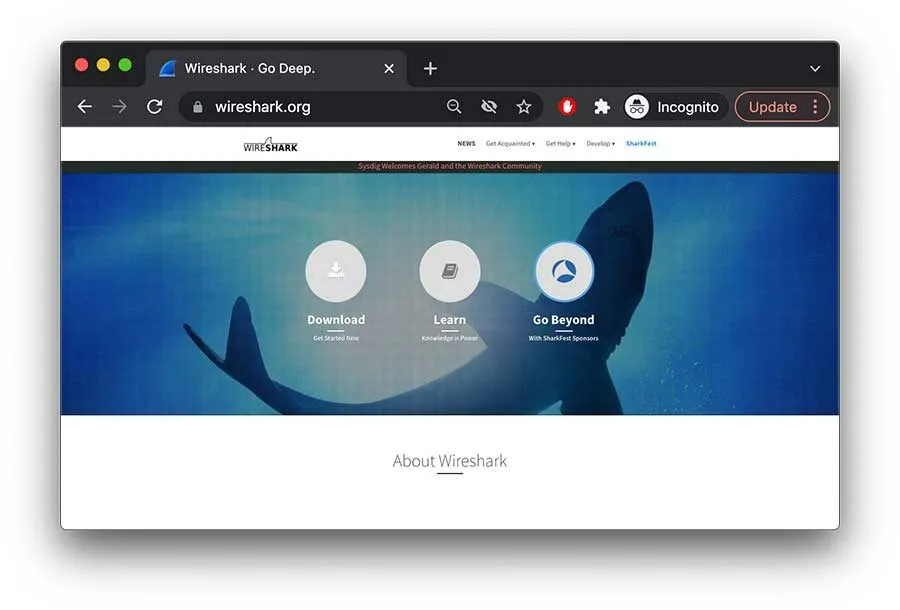
- Website URL: wireshark.org
- Wireshark is an open-source network scanner.
- It can work on an active or live network between the client and the server.
- Users can view the network traffic and follow the stream.
- Wireshark shows the users the stream of traffic construction of the TCP session.
- Wireshark can run on multiple Operating systems, including Linux, Windows, etc.
- The only drawback of using Wireshark is that it has suffered from Remote Security Exploitation.
WireShark is one of the most popular options for network scanning. It is a free network protocol analyzer that can be used to analyze data from wired and wireless networks.
One of the main advantages of WireShark is its ability to capture data packets. It allows you to monitor your network activity and identify possible security risks. WireShark also includes several features that make it easy to troubleshoot network issues, such as filters and color coding.
On the other hand, WireShark is suitable for virtually any system because it includes official Windows, Mac OS X, and Linux versions. So no matter what device you use to connect to your network, Wireshark will work for you. It also supports the Wireshark protocol, which means you can use it for debugging when connecting to other devices in your network.
However, Wireshark can be complex, and learning its features takes time. Additionally, it can be quite resource-intensive, so it may not be suitable for use on devices with limited processing power.
2. Nmap

- Website URL: nmap.org
- Nmap maps the network and ports numerically, which is why it is known as ‘The Port Scanning Tool.’
- Nmap integrates the NSE-Nmap Scripting Engine, which detects network security issues.
- Nmap checks for the availability of hosts by analyzing the IP packets.
- It includes additional utilities such as Zenmap with advanced GUI, Ndiff for computer scan, and NPing for Response Analysis.
- It is free and available for use.
Nmap is a free and open-source network scanner popular among security professionals. It can scan local and remote networks for devices, services, and vulnerabilities. It collects information by sending raw packets to the system ports. Moreover, it determines whether the ports are open, closed, or filtered. Furthermore, it uses scripting engine scripts to identify network security issues and misconfigurations.
The best part of Nmap is its ability to scan large networks. It includes wireless infrastructure monitoring that detects security issues, such as vulnerable ports. Also, it comes with an official GUI (graphical user interface) and the command-line interface version.
However, there are a few drawbacks to using this tool. It can take longer to complete the command if you don’t limit your scan range. In addition, some users often feel the network scanning tool should include more built-in tools.
3. NetScanTools Pro
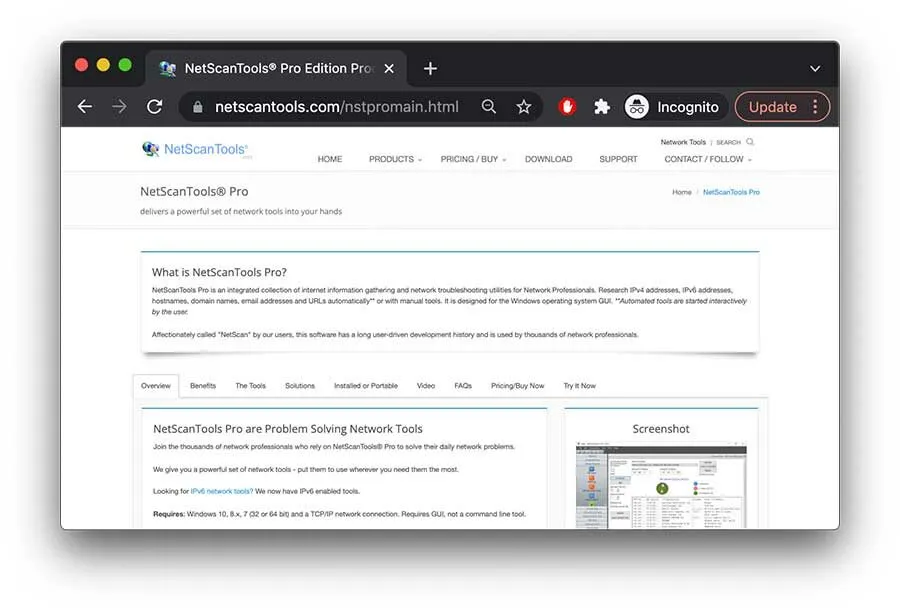
- Website URL: netscantools.com
- Capable of scanning both local and remote networks
- Can perform ping sweeps and port scans
- Includes essential network testing tools to perform speed tests
- Can be used with a packet sniffer for more detailed information
- It is not a free tool and costs $249
NetScanTools Pro is a simple yet powerful network scanner that makes it easy to identify devices connected to your network quickly. It can scan local and remote networks and detect wireless and wired devices. This includes devices connected via Ethernet, wireless, VPN (Virtual Private Network), modem dial-up, DSL (Digital Subscriber Line), or Bluetooth.
Moreover, NetScanTools Pro can perform ping sweeps and port scans to identify running services on detected devices. The tool can be used with a packet sniffer for more detailed information about intercepted packets. It also includes essential network testing tools to perform speed tests and check your network’s bandwidth usage.
As it is not a free tool, you can get it for $249 for single use and install it on your device or laptop. Some users aren’t comfortable paying this amount, so they drift away from using it.
4. ntop Scanning Tools
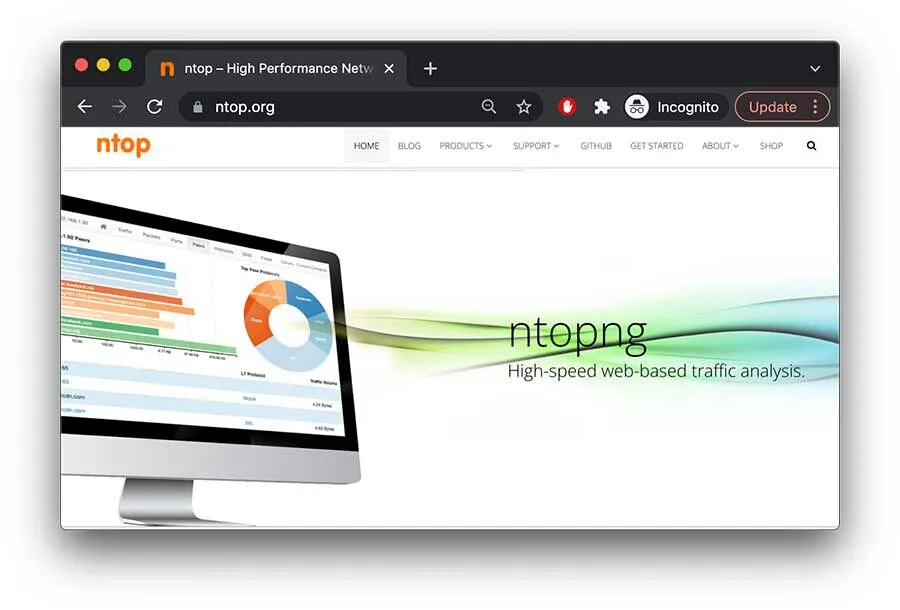
- Website URL: ntop.org
- Free, open-source network monitoring tool
- Can show all the data passing through a network in real-time
- Helps identify suspicious or unexpected behavior on your network
- Has the ability to track individual connections between devices on your network
- It contains an HTTP proxy server and port scanner
- Can be very resource-intensive
- Comes with a built-in web browser
ntop is a free, open-source network monitoring tool that can be used to visualize traffic on a network. It can show all the data passing through a network in real time, which allows it to identify issues more quickly than many other tools.
It helps identify suspicious or unexpected behavior on your network. You can set up ntop to alert you when certain types of activity are detected via email, SMS (Short Message Service), or instant messaging programs such as MSN Messenger.
One of the main advantages of ntop is its ability to track individual connections between devices on your network. This gives you insight into what people on your network are doing, which makes it ideal for monitoring the activity of employees on a corporate network.
ntop also includes several helpful features, such as an HTTP proxy server and port scanner, that make it more versatile than many other network monitoring tools. However, ntop can be very resource-intensive, primarily when monitoring large networks. In addition, its open-source nature means that it is not as simple to use as some commercial options, and its built-in web browser can be difficult to navigate for specific tasks.
5. Angry IP scanner
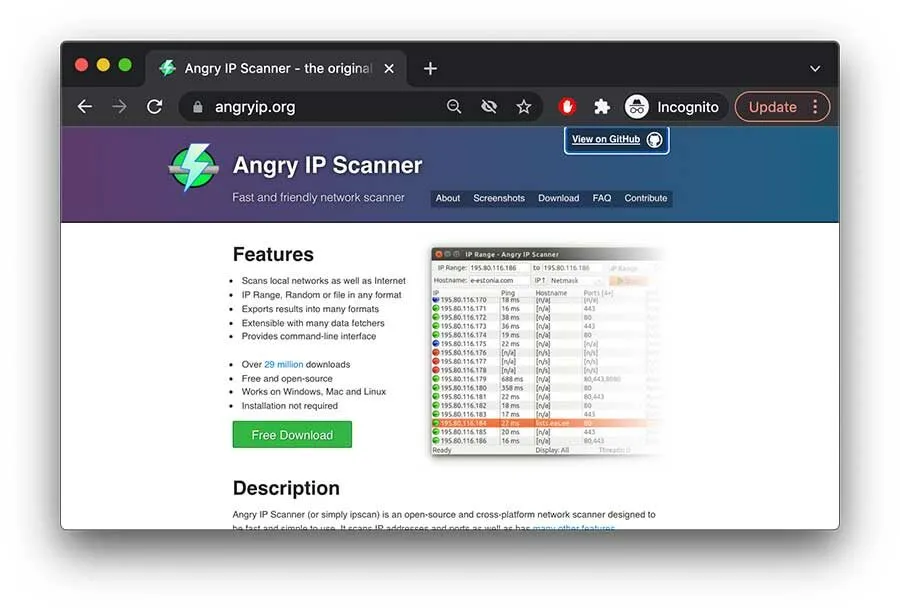
- Website URL: angryip.org
- Angry IP Scanner scans the IP address and performs a port scan.
- It provides thorough reports on the flaws in the network in various formats, such as XML, CSV, Txt, etc.
- The report provided by Angry IP Scanner is precise and includes information on many things, such as the hostname, computer name, NetBIOS, MAC address, workgroup information, etc.
- Unlike other networking tools, Angry IP Scanner provides a separate thread for each IP address.
Angry IP Scanner is a free, open-source network scanner popular among system administrators. The most impressive thing about Angry IP Scanner is its speed, as it can scan large networks quickly and efficiently. It also has a graphical user interface, making it easy for novices and experts.
This network scanning tool pings each IP address to see the hostname and analyzes the MAC address and ports. Unlike other tools, it uses the multi-threading scanning approach, a separate scanning thread for each IP address that helps improve the scanning process.
The Angry IP Scanner has impressive features like favorite IP address ranges, customizable openers, NetBIOS information, and web server detection. The most significant drawback of using this tool is that it has no predefined IP address range, and users have to insert the IP address range manually. Also, the IP scans are not as effective as the paid tools.
6. Fing

- Website URL: fing.com
- A free network scanner,
- Uses both ping sweeps and port scans to detect devices.
- Blocks privacy intruders
- Detect the weak and vulnerabilities in your router and prevent remote access.
- Takes less time to identify all the devices within a network
- The tool doesn’t offer a 24/7 live chat support feature
- The tool offers a free and premium option starting at $4.99 monthly.
Fing is a free network scanner that allows you to scan networks, perform a speed test, discover connected devices, and troubleshoot device and network issues. It uses both ping sweeps and port scans to detect devices.
Also, It is one of the best network scanning tools that offer various security-enhancing features such as Wi-Fi protection, security alerts, tracking user presence, and manual network scanning. It also blocks privacy intruders by receiving notifications of any unknown device within your network and automatically blocks them. Besides this, it detects the weak and vulnerable in your router and prevents remote access.
Fing is the most preferred choice of users because it takes less time to identify all the devices within a network and efficiently compiles a list. The list helps you view the devices’ details and add notes for them, so it’s easy to check them in the future. However, the tool doesn’t offer a 24/7 live chat support feature, which disappoints the users the most.
The network scanning tool offers a monthly premium plan starting at $4.99. You can use it and enjoy the extra benefits and features missing from the free plan.
7. ManageEngine
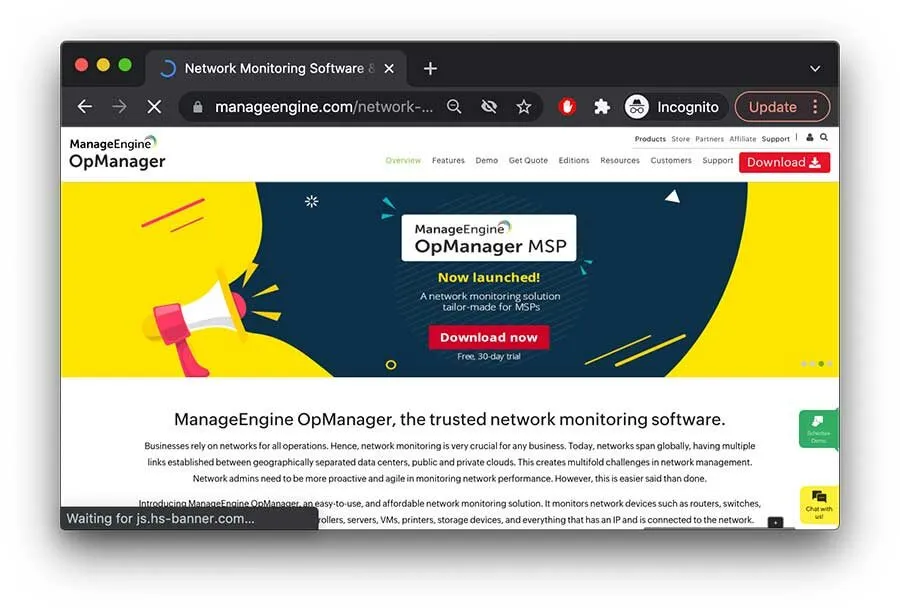
- Website URL: manageengine.com
- a commercial network scanner
- allows you to identify the devices connected to your network quickly
- can scan network subnets easily
- comes with a graphical user interface
- Is somewhat unstable on Windows Server 2003 systems
- It is one of the most expensive options on the market
ManageEngine is a commercial network scanner that allows you to identify the devices connected to your network quickly. It uses both ping sweeps and port scans to detect devices.
One of the main advantages of ManageEngine is that it includes several features that allow you to detect security issues, such as vulnerable ports. Additionally, ManageEngine can scan network subnets quickly, making it ideal for more complex networks with multiple devices.
ManageEngine also has a graphical user interface, making it easy for novices and experts. However, one downside of ManageEngine is its price tag. It is one of the most expensive options on the market. Also, it can be somewhat unstable on Windows Server 2003 systems.
8. Acunetix
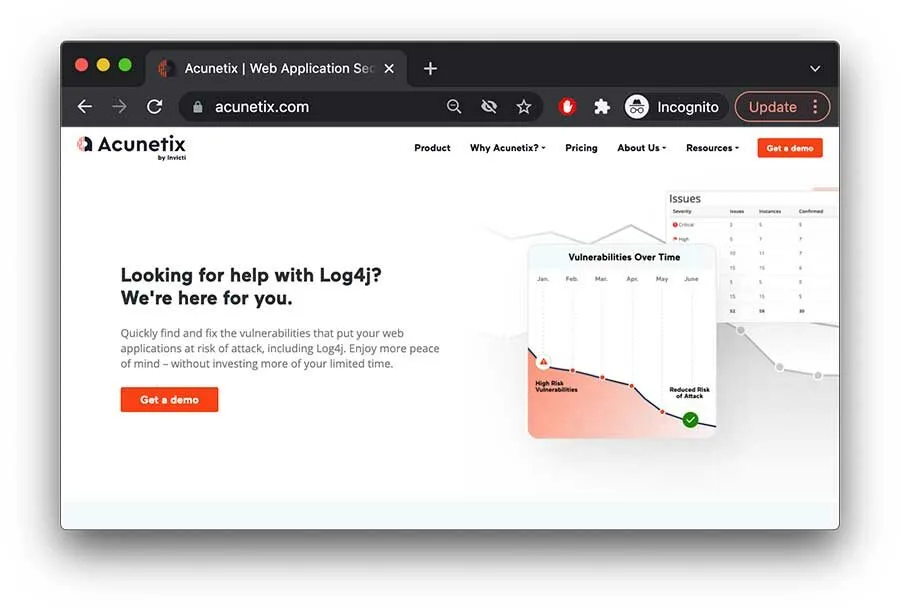
- Website URL: acunetix.com
- Does a security test for routers, firewalls, switches, load balancers, as well as other components of a network
- Discovers open ports and running services
- Searches for problems such as poorly configured Proxy servers, weak passwords, weak SNMP community strings, and TLS/SSL ciphers through a detailed system analysis.
- It provides a comprehensive perimeter network audit.
- It is free for one year of use, making it pretty affordable.
Acunetix is a commercial network scanning tool designed to detect vulnerabilities in web applications. It uses various methods to find these vulnerabilities, including spidering and fuzzing. Additionally, Acunetix can be used to scan for SQL injections and cross-site scripting attacks.
However, one downside of Acunetix is that it does not include basic services detection or port scanning features. Also, it is difficult to use; without proper training, it can take a long time to learn how to use Acunetix.
9. Advanced IP scanner
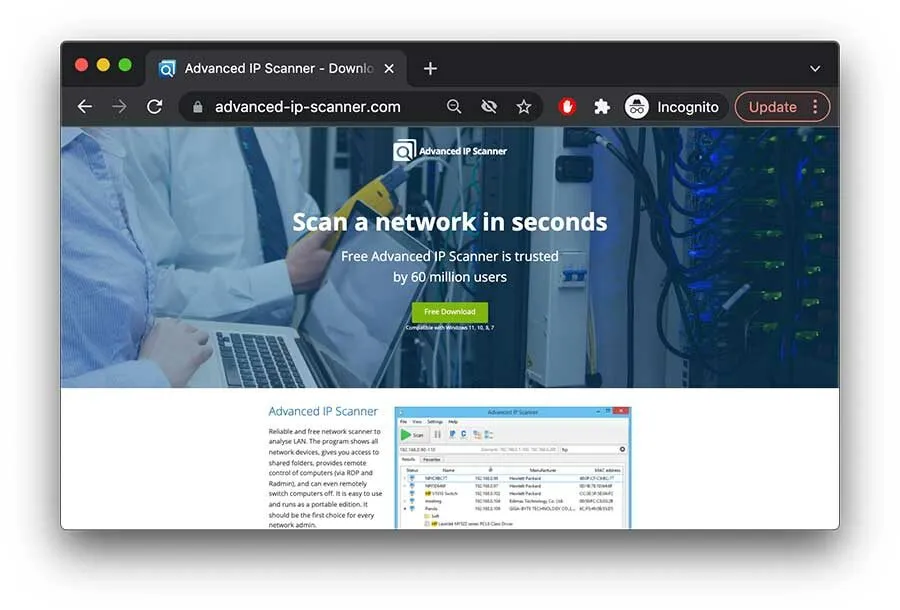
- Website URL: advanced-ip-scanner.com
- It’s an open-source network scanning tool that runs on Windows.
- It is free to use.
- It can scan devices connected to a network- including wireless devices.
- Advanced IP Scanner performs many functions such as remote access, wake-on-LAN, quickly shut down, etc.
- It allows services such as Viz. HTTPS, RDP, etc., and FTP services.
It’s a free and open-source network scanning tool on the Windows platform. It can easily detect and scan devices on your network and perform multiple activities such as quickly shut down, remote access, and remote wake-on LAN.
The best part of Advanced-IP-Scanner is that it doesn’t require any installation process; thus, any non-technical person can also use it easily. However, although it is easy to use, it does not come with a built-in help manual and has stability issues.
10. OpenVAS
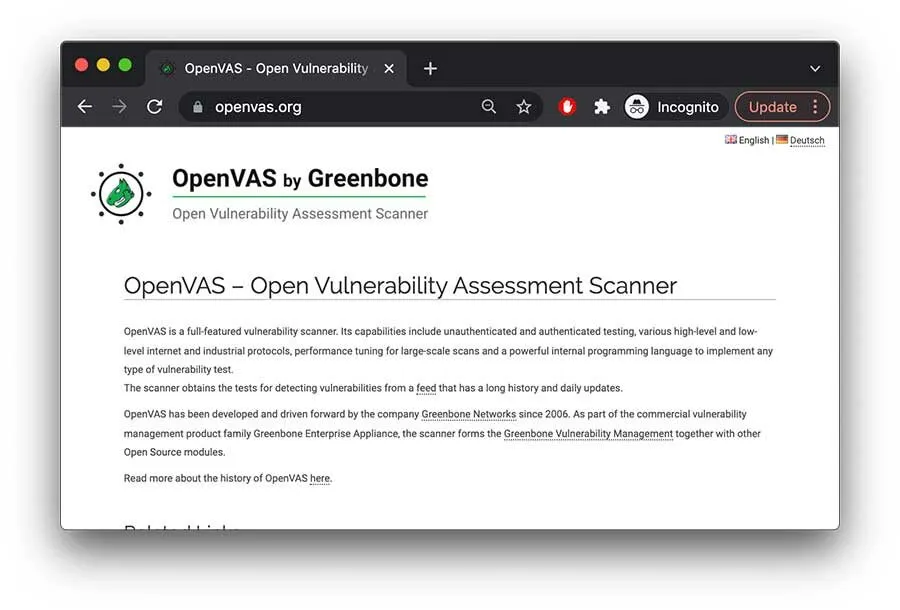
- Website URL: openvas.org
According to its website, OpenVAS is a full-featured vulnerability scanner. Its key features are:
- Entirely free to use.
- OpenVAS can be integrated with Open Vulnerability Assessment Language (OVAL) to write new security tests.
- OpenVAS provides many scan options, including Full Scan, WordPress Scan, and Web server Scan.
- Perhaps the only flaw in the design of Open VAS is that its Security Scanner only runs on Linux.
11. Qualys FreeScan
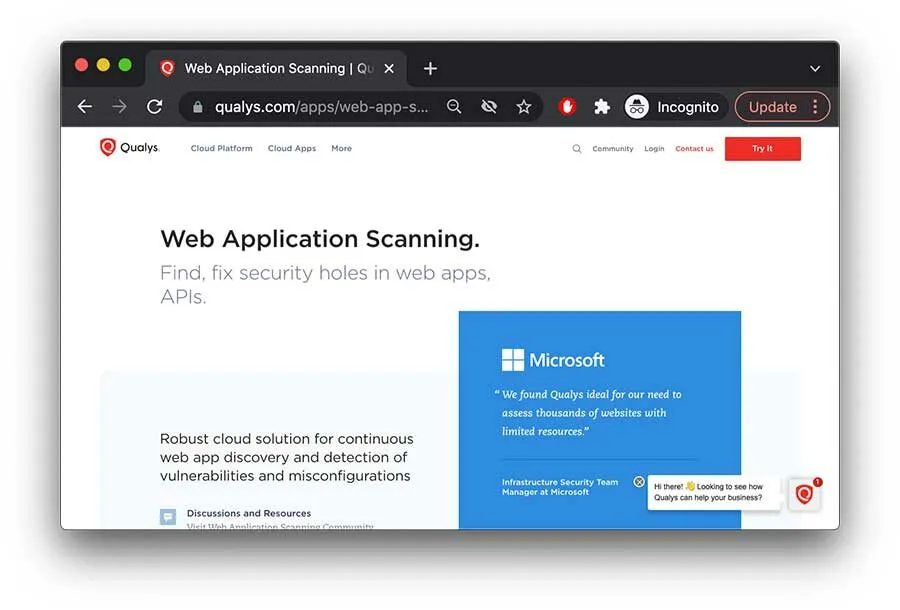
- Website URL: qualys.com
Qualys is a free and open-source network scanning tool that detects flaws in the network system. Its key features are:
- Scans URLs, IPs, and local servers to detect any loophole in network security.
- Qualys offers three types of scans for multiple vulnerabilities: vulnerability checks, OWASP, and SCAP tests.
- Qualys detects and helps users get rid of security patches.
- Perhaps the only drawback of using Qualys is that it only allows ten free tests and cannot be used for free in the long run.
12. Nikto

- Website URL: cirt.net/Nikto2
Nikto is an open-source web server scanner with the following features:
- Nikto provides rapid testing to identify any suspicious activity in the network.
- It provides Full HTTP proxy support.
- It provides reports in various formats, such as XML, HTML, and CSV.
- The scanning features of Nikto are updated regularly.
- Nikto scans HTTP servers, as well as web server configurations.
13. Retina Network Security Scanner
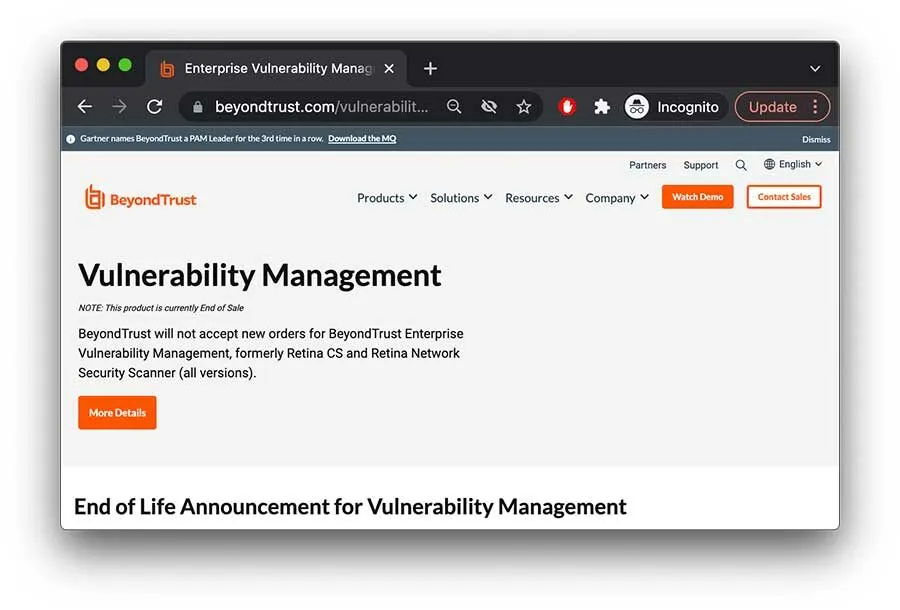
- Website URL: beyondtrust.com
Retina Network Security Scanner, beyond trust, is a network scanner that works across multiple platforms. It has the following key features:
- Retina provides security fixes to Microsoft, Adobe, and Firefox applications and network scanning.
- It provides risk assessment based on optimal network performance, applications, Operating systems, etc.
- It is free to use and provides security patches for 256 IPs.
- Retina allows the user to select the type of report delivery and the format.
14. Nessus

- Website URL: tenable.com
Nessus is a commercial vulnerability scanner that performs a multitude of functions, such as:
- It is available in three versions to fulfill user requirements: Nessus Home, Nessus Professional, and Nessus Manager/Nessus Cloud.
- Although Nessus is mainly commercial software, a free version is available for download.
- Nessus provides a timely vulnerability assessment to its users.
- It has built-in plugins, which allow it to detect over 50,000 vulnerabilities.
- Nessus’s web-based interface allows it to perform local and external checks.
15. Snort
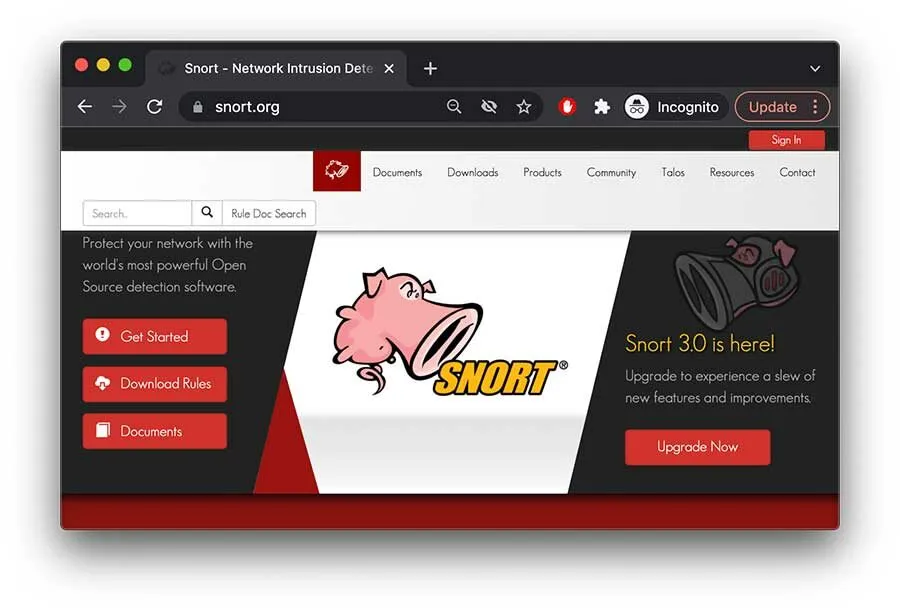
- Website URL: snort.org
Snort is an open-source network scanning tool with the following features:
- It’s free to use.
- It analyses the IP address and the traffic passing through the network.
- Quickly detects malware and port scans via content searching and protocol analysis.
- Snort utilizes a Modular Detection Engine and Basic Analysis and Security Engine (BASE) to define and describe network traffic.
16. Nexpose
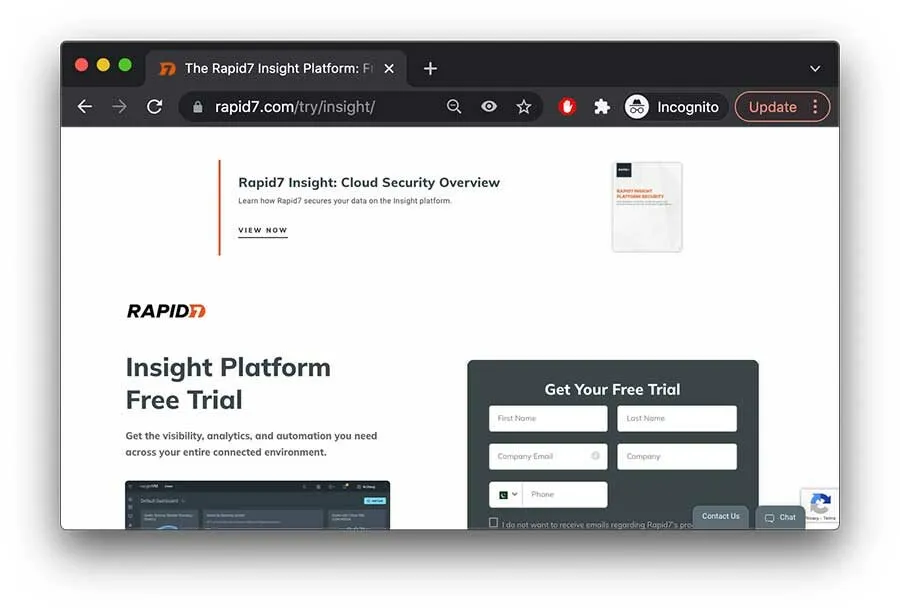
- Website URL: rapid7.com
Just like Nessus, Nexpose is a commercial network scanner tool with the following available functions:
- A free version of Nexpose is available in its Community Edition.
- Nexpose scans networks, operating systems, application databases, etc.
- It can be installed onto Windows and Linux, and Virtual Machines.
17. OpenSSH
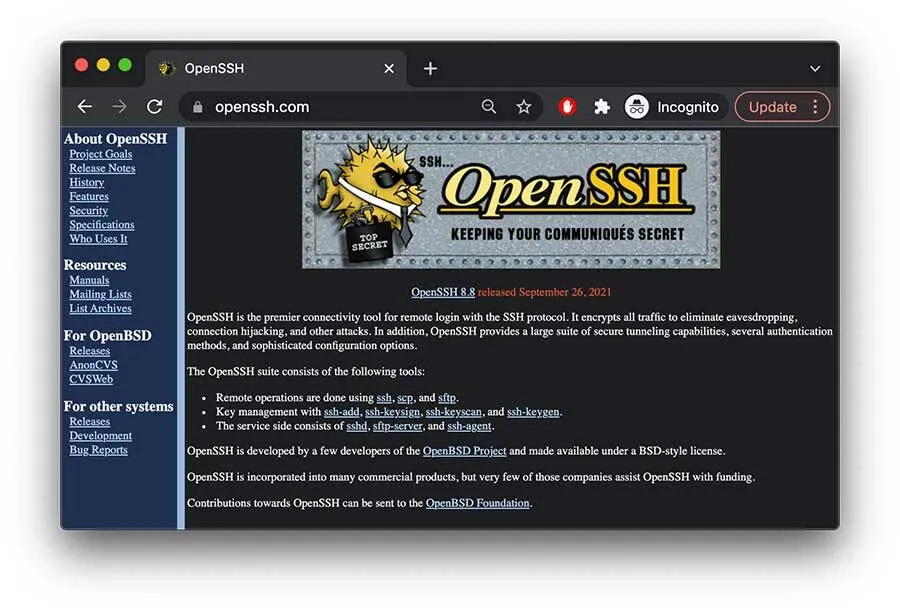
- Website URL: openssh.com
OpenSSH (Secure Shell) is a network scanner with the following functions:
- Creates a secure connection over an unsafe network link by encrypting it.
- Entirely dedicated to the UNIX environment.
- OpenSSH utilizes the Premier Connectivity Tool, which encrypts all the network traffic and increases the network’s security.
- It provides SSH tunneling, server authentication, and secure network configuration.
18. Paessler PRTG Network Monitor
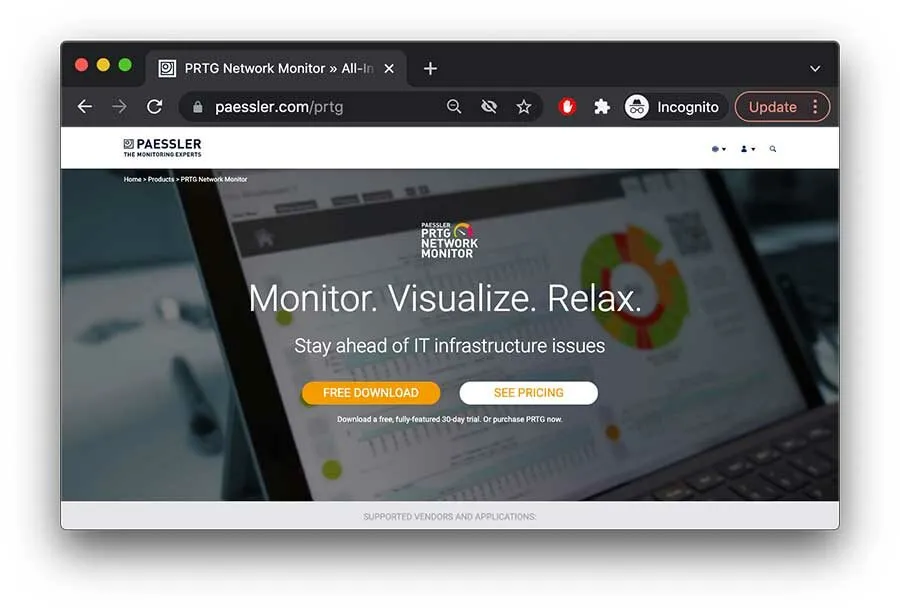
Paessler PRTG Network Monitor is a commercial network monitoring tool that allows you to know about your device bandwidth and apps using the source of bottlenecks.
The most impressive feature of this tool is that it provides detailed stats for every app connected to your network. Moreover, you can monitor specific datasets from your database and even manage your computing services from anywhere.
So far, the only thing users dislike about the Paessler network monitor tool is its price. Although it offers various plans for small, medium, and large enterprises, the prices are too high. On the contrary, the service is not what you want if you use the free version.
19. Skybox security
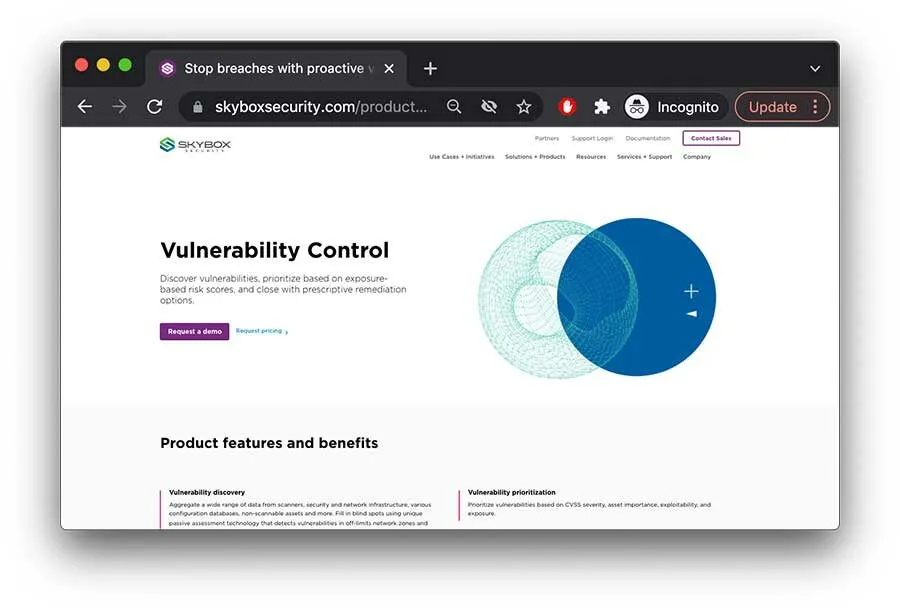
- Website URL: skyboxsecurity.com
Skybox Security is a commercial network security scanning tool designed to detect vulnerabilities in your network. It uses various methods to find these vulnerabilities, including vulnerability scanning and penetration testing. Additionally, Skybox Security can scan for open ports and missing patches.
20. Site24x7
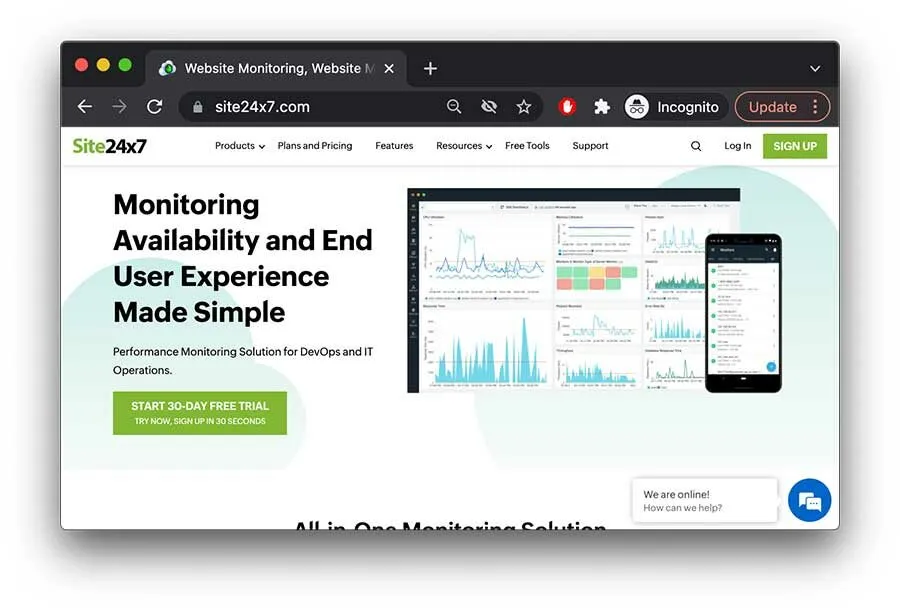
- Website URL: site24x7.com
Another best network scanning tool is Site 24×7, which automatically discovers the devices in your network within the provided IP range or as a whole network using SNMP. You can also view the top devices based on response time, packet loss, bandwidth utilization, and errors and discards.
However, one downside of Site24x7 is that it is difficult to use. It does not come with any documentation or training material, so it takes a long time to learn to use Site24x7. You can avail of the 30-day trial period, and if you think that it is challenging to use, you can demand a refund.
21. SolarWinds- Network performance monitor

- Website URL: solarwinds.com
SolarWinds has been a commercial network monitoring and scanning tool for over 20 years. This comprehensive solution allows you to monitor your entire network, from the device to the application level. SolarWinds also includes features like a Wi-Fi network analyzer, Wi-Fi monitor, network diagnostic tools, and others that allow you to detect security issues, such as vulnerable ports.
The best thing about this network scanning tool is that it provides the connected devices’ availability, fault, and performance metrics. However, it does come with a downside, which is its price tag. It is amongst one of the most expensive options on the market. However, you can avail yourself of the 30-day risk-free trial to test its services.
Share this article
About the Author
Waqas is a cybersecurity journalist and writer who has a knack for writing technology and online privacy-focused articles. He strives to help achieve a secure online environment and is skilled in writing topics related to cybersecurity, AI, DevOps, Cloud security, and a lot more. As seen in: Computer.org, Nordic APIs, Infosecinstitute.com, Tripwire.com, and VentureBeat.
More from Iam WaqasRelated Posts

19 Best Vulnerability Management Software or Tools in 2024
KEY TAKEAWAYS Vulnerability management tools scan and detect weaknesses within the network that hac...

How to Detect, Identify and Fix Packet Loss with Best Tools
KEY TAKEAWAYS Packet loss reduces the speed and amount of data that flows through the network. This ...

15 Best Network Security Software – Top Pick Of Organizations
KEY TAKEAWAYS Network security software keeps the data secure and blocks malicious or potentially vu...

15 Best Virtual Machine Software for Windows in 2024
KEY TAKEAWAYS Virtual machine software is a vital tool for developers to deploy VM software to test ...

What is Software Deployment: Risks and Best Practices
KEY TAKEAWAYS Software deployment is facing various security risks amidst the advancements in the in...

Building Encryption into the Network Fabric with SASE
A network fabric is a mesh of connections between network devices such as access points, switches, a...





